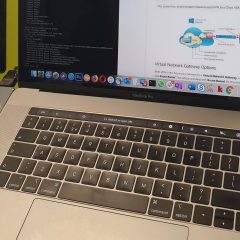mac OSX: Opening JNLP Files?
KB ID 0001767 Problem I needed to get onto a HPE server’s iLO at work today. I was using Firefox and the .Net extensions no longer work, so I was forced to use Java web start. Annoyingly that opened my Windows 10 VM (that runs in VMware Fusion), then it fell over! So the problem is, I need to be able to ‘RUN’ jnlp file on my MacBook, but there’s no Java application in the applications folder. Opening JNLP Files...
macOS: Microsoft Outlook Search Broken
KB ID 0001754 Problem I’ve had to contend with Outlook Search Broken on Windows clients many times, but not being able to search my ‘sent’ and ‘deleted’ items has a detrimental effect on my productivity. Outlook Search Broken Fix This can happen if the folder/drive that your Outlook profile is in is Blocked/Prevented access by ‘Spotlight’ but in my case that wasn’t the problem. Close...
Microsoft Edge (macOS) Migrate Bookmarks from Safari
KB ID 0001641 Problem So now theres a version of Microsoft Edge for macOS! Normally I would not bother, but I spend a lot of time in SharePoint and Azure so I thought, rather than my usual approach of playing ‘Browser Roulette’ I’d try Microsoft Edge and see what it was like. My usual browser of choice is Safari, but the install wizard defaults to wanting to import bookmarks / favourites* from Chrome. (I do also have...
macOS: Find your DHCP Server Address
KB ID 0001587 Problem In Windows this is easy to find, ‘ipconfig /all’ will tell you 🙂 On macOS it’s not so simple. Solution First you need to know which network card we are talking about! Your wireless network card is nearly always en0 (that’s a zero), if you are on a wired connection simply run ifconfig and find the right network card. to double check you can run; ipconfig getifaddr en0 Then to see your DHCP...
iLO: Java Error “Unable to Load Resource”
KB ID 0001567 Problem When attempting to connect to an iLO 3 remote console on an HP Server; General Exception Name: com.hp.ilo2.intgapp.intgapp ExitException: Unable to load resource https://{Server}/html/intgapp3_231.jar Solution Having added the URL to the iLO to the trusted sites in the the Java Preferences, I thought this all I had to do. Turns out I was wrong. Navigate to Administration > Security > Encryption >...


